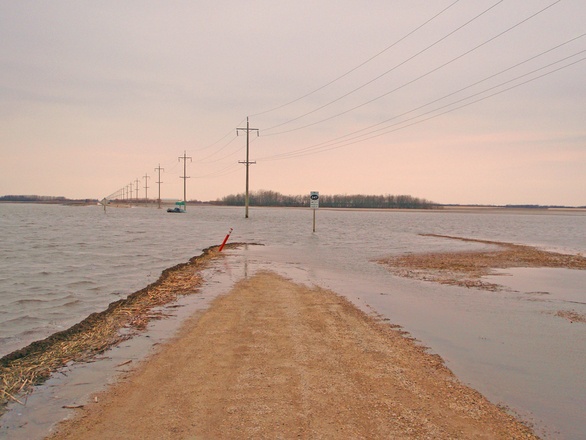
Avoiding "New Home Heartbreak"
[fa icon="calendar'] Jun 1, 2017 3:38:03 PM / by Diana Bass
Since 2010, more than 200 complaints about new home construction have been received by the the Indiana Attorney General's Office. Poor workmanship and failure to honor a warranty are some of the common complaints against builders.
Partnering with Call 6 Investigates in Indianapolis, ABC News recently interviewed CCA's CEO Mark McGivern. As a construction defect expert, McGivern provided perspective and insights into this situation:
Construction expert Mark McGivern said water intrusion is the biggest -- and the most expensive -- problem homeowners face.
"In some cases, it can cause mold, which then becomes a health concern," said McGivern, CEO of Construction Consulting Associates.
McGivern said there are a number of things a homeowner can do to protect themselves.
“Be an informed and educated consumer, and whether you’re buying a $200,000 house or a $2 million house, the rules apply as just good common sense,” said McGivern.
Watch the news story and hear more of McGivern's insights at the Call 6 website.
Read More [fa icon="long-arrow-right"]
What is Critical in a Project Management System?
[fa icon="calendar'] May 30, 2017 9:36:34 AM / by John R. Manning, PE, CCM, LEED
One of the key areas that require management on projects is the management of data. The larger the project the more data there is to manage. Projects have failed due to the lack of management of data.
Over the past two decades the industry has moved from the era of hard copies in filing cabinets to electronic processes. One reason for this shift was to aid in the management of the large amounts of data required on a project. In the 1980s and 1990s I worked on several multi-billion-dollar theme park projects. The management of data was primarily done with large areas of filing cabinets, plan rooms and libraries of information. There was so much data in hard copy form that, at times, information was forgotten and/or lost. This type of situation drove the development of computerized Project Management Systems. The focus for Project Management Systems was becoming the repository for information on a project that would allow an individual to easily search and find key data.

A Project Management Plan is key to a successfully run project
[fa icon="calendar'] Mar 21, 2017 8:39:04 AM / by John R. Manning, PE, CCM, LEED
This is the third post in our year-long series about the best ways to work with your Owner's Representative. You can view all of the series posts here.
The Project Management Plan is the heart and soul of how the Owner’s Project Team will run the project.
This plan outlines key visions of the leader of the Owner’s Representative Team on how the project should be run. Not having a plan will cause starts and stops in a project as the collective team (Owner, Design Team and Contractor) wait until the Owner’s Representative puts in place the segments of this plan on the fly. Development of this plan will help put in writing the vision of the project, budget, schedule and processes necessary to achieve that vision.
The key elements of a Project Management Plan include at a minimum:

What is the Proper Organization for Your Project?
[fa icon="calendar'] Feb 28, 2017 9:09:07 AM / by John R. Manning, PE, CCM, LEED
This is the second post in our year-long series about the best ways to work with your Owner's Representative. You can view all of the series posts here.
Logically the proper project organization will depend upon the size and complexity of the project. One thing that will never change is the need for there to be one key leader for the Owner on the project.
We noted in our first blog of 2017 one of the key findings of research into failed projects is, “Leadership from Owners needed to increase and there is a need for a strong Owner's representative’s presence.” Whether it is a single individual as the sole representative for the Owner of the project or he/she is the leader of a group of individuals representing the Owner of the project singularly or collectively they must be competent to lead the project from concept to completion. The Owner’s Representative(s) must have the ability, authority and responsibility to execute the requirements of the Owner on the project. This starts with a clear vision for what the finished project will be and the ability to detail that vision to all other stakeholders in the Project. This starts with the development of strong contracts for the Designer(s), Contractor(s) and any other entity necessary for the successful completion of the project.
Collectively the Owner’s Representative team needs have the skill set capable of taking a project from concept to completion, ensuring that the best interests of the Owner are maintained. This team may be totally in-house (employed by the Owner), totally out-sourced (contracted Owner’s Representative) or a mixture. On larger projects there could be multiple tiers of representatives each responsible for a different area of the project or for different scopes. It will be critical for the individual who is in charge of representing the Owner, overall on the project, to detail the job functions of the individuals assigned to the project regardless of which of the three scenarios detailed above are utilized.

Handle with Care: Asbestos Contamination and Clean-Up
[fa icon="calendar'] Feb 15, 2017 10:00:00 AM / by Robert Pfeifer, AIA
Your insureds are scared of asbestos in their building! Who can blame them. Asbestos in homes and businesses should be no surprise to construction professionals.
Warnings regarding the dangerous nature of asbestos have been around since the 1960s.
As all construction professionals know, asbestos exposure is something that always needs to be taken seriously. According to OSHA, "there is no 'safe' level of asbestos exposure for any type of asbestos fiber. Asbestos exposures as short in duration as a few days have caused mesothelioma in humans. Every occupational or incidental exposure to asbestos can cause injury or disease and contributes to the risk of getting an asbestos related disease."

Why Do You Need Good Project Procedures?
[fa icon="calendar'] Feb 2, 2017 10:06:51 AM / by John R. Manning, PE, CCM, LEED
This is the fourth post in our year-long series about the best ways to work with your Owner's Representative. You can view all of the series posts here.
Good Project Procedures are critical for a well-run project.
They help everyone on a project know the ground rules and processes needed to successfully work together as a team. It is critical that Owner’s Representatives take the lead in pulling a Procedure Manual together and detailing those processes to everyone on the project.
A good Project Procedures Manual should address at a minimum:
1. Functional Responsibilities and Limits of Authority
The roles and responsibilities for all the key participants on a project must be detailed. If Contracts are in place the roles and responsibilities should adhere to those Contracts. As the old saying goes on problem projects –“Well the problem here is we have responsibility without authority.” It is critical that when someone is placed in a position of responsibility that they are granted the appropriate authority. The Procedure Manual should detail responsibilities by the level of authority. Flow charts work well with depicting levels of responsibilities and authorities.
2. Document Control
Projects have a large amount of documents. A procedure must be put in place on how to manage those documents. In the current world there are many forms of electronic document management systems out there. Most projects today do not keep the amount of paper files that were generated in the past. Cloud based systems are generally the most efficient way to go for a project to handle electronic documents however the processes need to be planned out. A detailed document control procedure should be put in place from the start, one that is thoroughly thought out. There are ways to manage, view and markup documents virtually from anywhere. The cost of these systems could be on the low end of using a cloud based filing system like Google Drive® and BOX® or a full blown PM system like Procore®. This document control process should detail any and all filing systems whether electronic or hard copy that all will adhere to on the project. If not, then time will be wasted searching for documents that should be easily found. This is one of the key reasons the computerized project management systems have been growing in the industry as they force teams to adhere to a process that allows for proper filing and ease of searching.

CCA adds senior HVAC, Energy, and Mechanical Engineering expert
[fa icon="calendar'] Jan 23, 2017 8:33:22 AM / by Mark McGivern, CSI, Aff. M. ASCE
CCA is pleased to welcome Paul Dudley Smith, PE, CEM
Dudley joins us as a senior Mechanical Engineer with over thirty years of experience in the design, construction and testing of HVAC, piping, and other mechanical systems. Mr. Smith has performed a myriad of mechanical system analysis projects, studies, reports, designs and specifications. Dudley has provided project management, construction oversight services, and client support for various projects. Mr. Smith is a Certified Energy Manager providing direction and support for energy decisions and conducts energy studies and audits.

Climate Disasters Cost the U.S. $46 Billion
[fa icon="calendar'] Jan 17, 2017 11:21:13 AM / by Mark McGivern, CSI, Aff. M. ASCE
2016 was recorded as the second-warmest year to date according to NOAA's National Centers for Environmental Information report. According to NOAA, "Some extreme weather and climate events have increased in recent decades." A staggering $46 billion has been spent in damages due to climate-based disasters in 48 U.S. states. Unfortunately, these types of disasters not only cause monetary damages but have taken the lives of at least 138 people.
The yearly report included seven types of climate related disasters, which included droughts, hurricanes, and winter storms throughout the country. The news is opening up new discussions on how best to resiliently build in coastal areas that could be affected and where would the funds come from to pay for such mitigation. Once catastrophes occur, insurance companies and governmental agencies, such as FEMA and states, pay for losses. In addition, individuals absorb losses.

Using Experts to Solve Log Jams in Construction Defect Settlements
[fa icon="calendar'] Oct 17, 2016 9:23:15 AM / by Mark McGivern, CSI, Aff. M. ASCE
It is no secret that construction defect liability claims can become incredibly complicated. When something goes awry after tenants have moved in, the finger pointing game begins. Was it a design flaw or was something installed improperly? Did equipment fail or did the property manager improperly maintain it? Should the construction contractor have realized the engineers made a mistake? When the stakes become large, which insurance company should be on the hook?

California passes new laws following Berkeley tragedy
[fa icon="calendar'] Sep 20, 2016 8:22:00 AM / by Adrienne K. Paskind, AIA
Berkeley took center stage in June 2015 when six students died tragically and another seven were injured after a balcony on which they were standing on collapsed.
As a result, the California Senate has passed a new law for the construction industry traced back to Berkeley balcony collapse. The bill was passed after a unanimous vote or 37-0 and is intended to close those accountability gaps by bringing stricter oversight to the construction industry.
Read More [fa icon="long-arrow-right"]
